Discussion
In dealing with the issue of the millennium it becomes
important from the outset to realise that not only is there three main views as
to how the millennium will be manifested but there are a myriad of sub-views that
attempt to breakdown the event and in some cases twist it to suit ones own
theology.
 In the postscript to his book Robert Clouse writes
that the reason we need to spend so much time identifying our own position of
the millennium is because the answer to that question will in many respects
determine the way in which we see the church operating in the world. Not only
will the way it operates be determined by this issue but also the mission of
the church as we see it will be manifested in different ways.
In the postscript to his book Robert Clouse writes
that the reason we need to spend so much time identifying our own position of
the millennium is because the answer to that question will in many respects
determine the way in which we see the church operating in the world. Not only
will the way it operates be determined by this issue but also the mission of
the church as we see it will be manifested in different ways.
To start on a topic such as this it is firstly important to
compare and contrast the differing views of the millennium as expressed through
Revelation 20 and
other passages.
Firstly, what is commonly called the amillennial view holds
as it basic premise that there is no millennium or period of peace and
righteousness through which the church will pass leading up till the last days.
Because of their aversion to matter (based on a Greek
understanding of matter and an allegorising of exegesis) the Alexandrian
Fathers opposed millennialism, claiming that our hope lay in the heavenly
rather than the earthly realm.
Lewis and Demarst list the specific order of events for
those holding this view as: “Christ’s present spiritual reign over the church;
increasing apostasy on earth; the Great Tribulation; Christ’s second coming
with the deceased saints; the destruction of evil powers; the general
resurrection of believers and unbelievers; the last judgement; the eternal
state”.
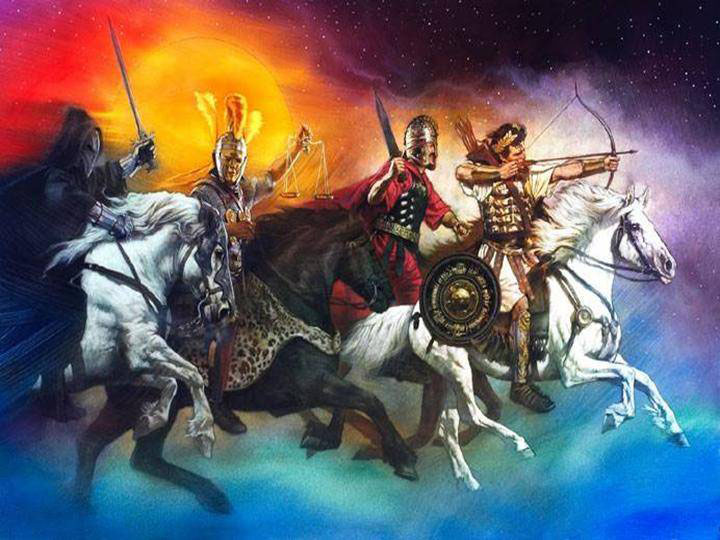 This is the view held by such notables as Augustine although
he is claimed by both the post and amillennial camps. In
the City of God Augustine writes that the millennium should be interpreted as
the six thousand year period between God’s creation of man and the second
coming of Christ, preferring to assume the symbolic rather than the literal
interpretation of Revelation 20.
This is the view held by such notables as Augustine although
he is claimed by both the post and amillennial camps. In
the City of God Augustine writes that the millennium should be interpreted as
the six thousand year period between God’s creation of man and the second
coming of Christ, preferring to assume the symbolic rather than the literal
interpretation of Revelation 20.
He goes on to cite the author of The Book of Revelation as intending
the thousand years to mean the whole of the history of humankind.
Regardless of whether Augustine is seen primarily as a
amillennialist or not he was responsible for moulding the theological thinking
on this issue for over a thousand years. Other great theologians from the Latin
Fathers such as Leo the Great, Gregory the Great, Albertus Magnus, and Thomas
Aquinas all took positions similar to Augustine against what was called the
“Chiliasm” or millennialism of their day.
The Amillennial position wants to affirm that at the coming
of Christ which is told of in Revelation 20 there will be only one return of
Christ, one resurrection and one judgement.
Robert Clouse points out that “they also interpret the millennium mentioned in
Revelation 20 as describing the present reign of the souls of the deceased
believers with Christ in heaven”.
This has the strength of dealing with the issue of the saints and what the
premillennialists would see as the first resurrection (Rev 20:5).
 The binding of Satan for instance is seen not as the total
banishment of Satan during this thousand years by banishing him to the pit (Rev
20:3) as per the premillennial position but rather a limitation of his powers
that enables the nations not to be deceived against the power of the gospel
message.
This fits well with their view of good and evil developing side by side till
the Lord suddenly returns to carry out the judgment.
The binding of Satan for instance is seen not as the total
banishment of Satan during this thousand years by banishing him to the pit (Rev
20:3) as per the premillennial position but rather a limitation of his powers
that enables the nations not to be deceived against the power of the gospel
message.
This fits well with their view of good and evil developing side by side till
the Lord suddenly returns to carry out the judgment.
The passage most often quoted in defence of the amillennial
position is in Matthew 13:24-30,36-43. The story of the wheat and tares
existing side by side till the harvest echoes the good and evil that
amillennialists talk about.
On the important subject of what position the Jews will hold
in the millennium the Amillennialists would insist that the promises and
covenants made to Israel are being fulfilled spiritually in the church.
Origen was to reject out of hand any suggestion that the Kingdom of God had any physical qualities to it. He like Augustine was to side with a
symbolic interpretation of the millennium.
Secondly, there is the postmillennial stance which holds
firmly to the concept that the Kingdom of God is now in force and is being
extended towards it fulfilment. Under the guidance of the Holy Spirit the world
will be evangelised and ultimately Christianised.
This will all culminate with the return of Christ at the
close of a long period of peace and righteousness called the millennium.
Thus the world will become a more Christlike place in which to live and evil
although it will not be totally obliterated will however be bought under
submission to a point where it is negligible.
This will be followed by a brief period of apostasy just prior to the advent of
Christ during which Satan will let be free.
 Again Augustine is credited with holding this position, as
mentioned earlier the amillennialists claim to have him among their
authoritative experts. However Augustine did in fact teach that the millennium
had already began and was to be seen as the entire period of man’s history.
This was also a view held by other theologians of the past such as Jonathan
Edwards who writes, “this work will be accomplished by means, by the preaching
of the gospel, and the use of the ordinary means of grace, and so shall be
gradually bought to pass”.
Again Augustine is credited with holding this position, as
mentioned earlier the amillennialists claim to have him among their
authoritative experts. However Augustine did in fact teach that the millennium
had already began and was to be seen as the entire period of man’s history.
This was also a view held by other theologians of the past such as Jonathan
Edwards who writes, “this work will be accomplished by means, by the preaching
of the gospel, and the use of the ordinary means of grace, and so shall be
gradually bought to pass”.
Edwards explains that some will be converted and be used to
bring others to faith just as Daniel 2:3 prophecies.
Likewise he uses the illustration of the mustard seed in Matthew 13 to show
that it will be out of the smallest of nations that the Kingdom of heaven will
grow. Quoting Zechariah, Edwards points to a glorious revival through the
pouring out of the Holy Spirit.
This is in sharp contrast to premillennialism which would
sees the world as not being won for Christ during the present time, rather
seeing the millennium as coming after the advent of Christ (of which will be
dealt with shortly).
Postmillennialists hold to a similar view with regards to
the binding of Satan as the Amillennialists. It will be a figurative binding in
which his powers to sway the church and individuals from understanding the
gospel will be limited.
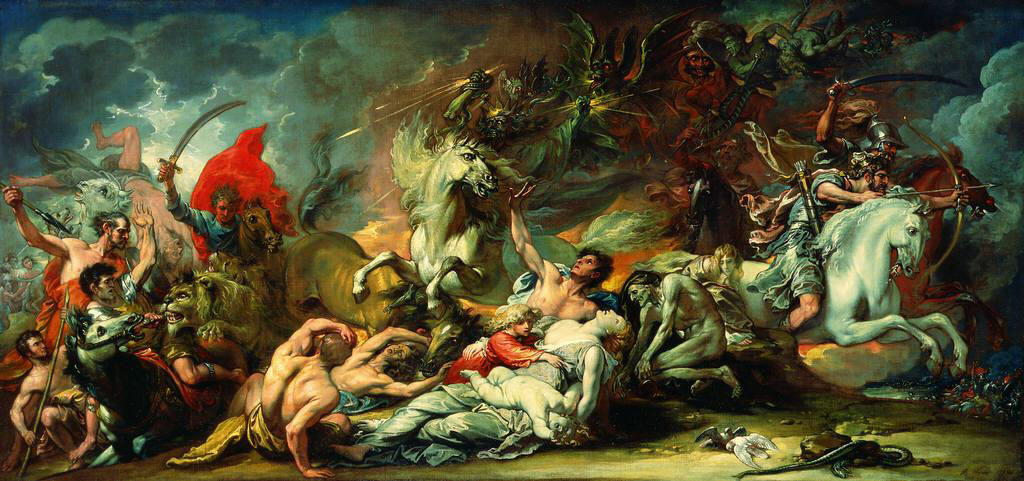 In contrast to the fulfilling of the promises to Israel in a spiritual manner (Amillennial), the Postmillennial view is that God has no special place
for Israel and that Old Testament prophecies about Israel apply to the church.
In contrast to the fulfilling of the promises to Israel in a spiritual manner (Amillennial), the Postmillennial view is that God has no special place
for Israel and that Old Testament prophecies about Israel apply to the church.
Thus the order of events for the postmillennial position
would be: “a golden age of increasing righteousness; a brief apostasy; three
and a half years of Great Tribulation; the personal return of Christ; the
general resurrection of the dead; the last judgment; and the eternal state”.
Finally, there is what has been commonly been called
premillennialism. So complex is the series of events that Appendix A has been
attached which lists a complete chronological set of events of the last times.
Without a doubt an area where premillennialism strongly
disagrees with the other two positions is over the interpretation of Scripture.
While both the Amillennial and Postmillennial camps are satisfied to own an
allegorical or symbolic interpretation of the Revelation 20 passage and others,
premillennialist's hold to a literal one thousand years and a literal confining
of Satan to the abyss or pit.
 The Didache for instance writes of a time when false
prophets and lawlessness will abound, to be followed by a time during which the
Antichrist will deceive the world with wonders and signs.
This sounds clearly like the period of the Great Tribulation as expected by the
premillennialist's.
The Didache for instance writes of a time when false
prophets and lawlessness will abound, to be followed by a time during which the
Antichrist will deceive the world with wonders and signs.
This sounds clearly like the period of the Great Tribulation as expected by the
premillennialist's.
Clouse notes that during history there has always been a
definite leaning to one of the three positions outlined here. Premillennialism
was for the first three centuries the predominant view.
Premillennialism has been divided into two distinct streams
with historical premillennialism being the predominant view held up until the
second half of the nineteenth century when a new form was introduced and
articulated by J.N. Darby. This was to be called dispensational
premillennialism.
For the purpose of this essay the main thrust will be looking at historic
premillennialism but it is important to note that the dispensationalist (see
Appendix B.) position divides Christ’s return into two phases and
places a big emphasis on the conversion of Israel. This will become evident in
it’s importance when the view of the millennium and the mission of the church
will be looked at later in the essay.
One main point of contrast of the three positions A, Post
and Premillennial is that the latter divides the resurrection into two phases.
This can be seen in the series of events outlined in Appendix A. It has been
noted earlier that both the Amillennialist's and the Postmillennialist's hold that
there will be only one general resurrection at which all the believers and
unbelievers will be raised.
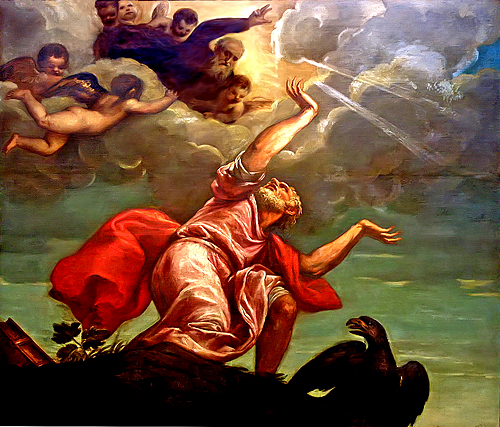 The premillennialist's see the world gradually disintegrating
as it travels towards the time of Great Tribulation. In this amillennialism
agrees with premillennialism that the Scriptures do not promise the conversion
of the world through the preaching of the gospel. Yet it agrees with
postmillennialism that the coming of Christ ushers in the last judgement and
the eternal state.
The premillennialist's see the world gradually disintegrating
as it travels towards the time of Great Tribulation. In this amillennialism
agrees with premillennialism that the Scriptures do not promise the conversion
of the world through the preaching of the gospel. Yet it agrees with
postmillennialism that the coming of Christ ushers in the last judgement and
the eternal state.
There is also agreement between Amillennialism and
Premillennialism that the return of Christ is imminent, however the
postmillennialist's hold that Christ cannot return until the world is converted
or at lest the majority has come to accept Christ as Lord.
Signs are another important element of the Premillennial
view point as they would expect the rise of the Antichrist and the Great
Tribulation to occur prior to the millennium being ushered in.
As for Israel, it has already been seen that the
Amillennialist's would hold to a spiritualising of the promises to Israel while the Postmillennialist's sees no special place for Israel as distinct from the church.
Turning now to what place Israel holds in the theology of
the premillennialist it is found that they are divided over this issue. Some
asserting that no future is to be found for national Israel while others see a
distinction between prophecy directed to the nation of Israel and prophecy directed to Israel as the people of God (the church).
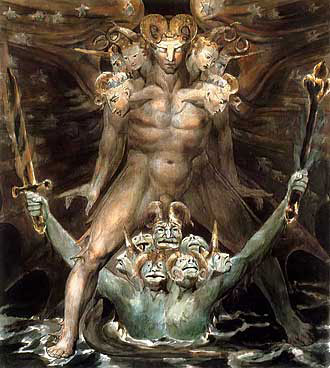 To try and bring some kind of
order to this it becomes
important to highlight the major points over which there is disagreement
between the three positions.
To try and bring some kind of
order to this it becomes
important to highlight the major points over which there is disagreement
between the three positions.
In summary, there is disagreement over the interpretation of
the passage (literal or not), the fate of Satan, the fate of Jews and if and when they
will be saved, whether there will in fact be a millennium at all, the number
and timing of the resurrections, the time of Christ's return and the future of
the church (does it gradually grow like the mustard seed or will the world
gradually overtake the church).
It is now to this latter aspect that the thrust of this
essay will turn. How will their view of the millennium affect their view of the
mission of the church?
Robert Clouse points out that an individual who takes a
premillennial view will generally be more pessimistic about society. As
the only hope for the world lies in the second coming of Christ they tend to
try and read the signs of the time and to bring about certain things in an effort
to hasten the day.
This is especially evident with the dispensational emphasis
on the need for the evangelisation of the Jewish people.
Social action for instance is for the premillennialist low
on their agenda because they see no hope for the lost of humankind in this world.
They would tend to hold a low view of the Kingdom of God and it’s presence in
the world to day, preferring to save a persons soul but failing to save the
person from social injustice and oppression.
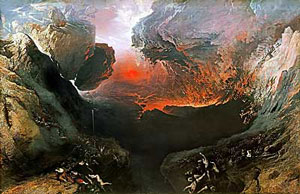 From personal experience it has
been seen in this authors local church that the vast majority of members over
the years have held a strong dispensational position and have as a result been big on the second
coming but have failed historically to evangelise and build into the church the
lost and hopeless.
From personal experience it has
been seen in this authors local church that the vast majority of members over
the years have held a strong dispensational position and have as a result been big on the second
coming but have failed historically to evangelise and build into the church the
lost and hopeless.
This was also evident in a major inner city Sydney Baptist church which had
held a strong premillennial view and was eventually closed due to becoming irevelant
in it's context. This church meet for only one and half hours each Sunday and had no social action with the community in which
it was located. Instead the emphasis was on saving the soul or calling them to
judgement so as hasten the day of the Lord’s return.
This attitude is in contrast to the dual aspects of the Kingdom of God. The here and not yet element holds the secret for Holistic ministry not
just as a service to human souls.
Premillennialist's also tend towards a separatist view of the
church. Holding that it is contaminating to have contact with culture and thus
would avoid learning of the Arts etc.
In contrast those of the postmillennial persuasion see the
world as a mission field in which to work, evangelise and build people into the
church. The fact that they see evil being gradually overcome by Christ means
they are much more optimistic in their outlook and more inclined to become
involved in social action and to take stands against oppression and inequality.
When looking at the Eighth Century prophets the theme of
failing to stand for the oppressed was held as one of the reasons for the judgement of the
nations and Israel alike.
Amillennialism like Premillennialism has the inherent
problem of a very pessimistic view of life and
as such would suffer some of the inadequacies of premillenniumism.
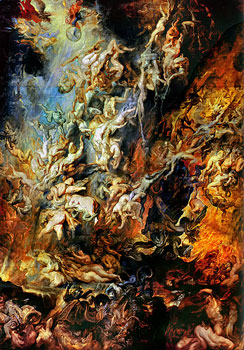 Interestingly, Albert Schweitzer held to the Amillennial
position and believed that Jesus would reveal himself to those who would obey
his commands.
His view of Christ although somewhat distorted however pushed him towards mission to
the underprivileged and lost.
Interestingly, Albert Schweitzer held to the Amillennial
position and believed that Jesus would reveal himself to those who would obey
his commands.
His view of Christ although somewhat distorted however pushed him towards mission to
the underprivileged and lost.
It is the inaugurated eschatology held by many
Amillennialist's that can give hope for the church of today. The now and not yet
aspect of the kingdom of God points the church towards it’s responsibility to
not only save a persons soul but to carry out Holistic ministry here on this
earth while we wait for the Lord’s return.
It would appear that the position that has the most to offer
in today’s world with a view to ministry is the one that allows the Old
Testament teaching of social justice and the New Testament command to take the
gospel to all the nations.
It could be said in conclusion, that if a proper detailed
analysis of the mission of the different churches in any country and their view
of the millennium were to be carried out, the success that that church had in
fulfilling the great commission would be intricately tied their millennial
view point.